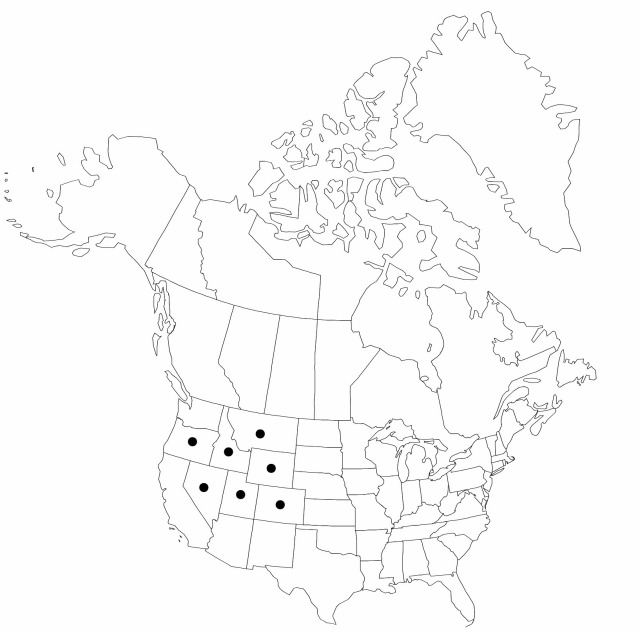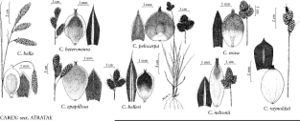Carex pelocarpa
Rhodora 39: 492. 1937.
Plants cespitose. Culms 10–40 cm, smooth. Leaves 3–4 mm wide. Inflorescences: proximal bracts shorter than, sometimes equaling or, occasionally, exceeding inflorescences; spikes overlapping, contiguous, forming a dense terminal cluster or, sometimes, proximal spikes separate and distinct, sessile, short-oblong, 7–10 × 5–7 mm; lateral 2–3 spikes pistillate; terminal spike gynecandrous. Pistillate scales dark-brown or black to margins, lanceolate, shorter or longer than, and narrower than, perigynia, midvein same color as body, inconspicuous, apex usually acute, occasionally short-mucronate. Perigynia ascending, glossy reddish-brown, often with yellowish or greenish brown margins, veinless, obovate or circular, 3.5–4.5 × 2.5–3 mm, apex abruptly beaked, smooth; beak 0.5–0.8 mm, deeply bidentate, smooth. Achenes filling proximal 1/2 or less of perigynia.
Phenology: Fruiting Jul–Aug.
Habitat: Alpine slopes, ridge crests, rocky lakeshores
Elevation: 2700–3700 m
Distribution

Colo., Idaho, Mont., Nev., Oreg., Utah, Wyo.
Discussion
Carex pelocarpa has often been treated within C. nova; it is distinguished on the basis of perigynia, pistillate scales, and ecology.
Selected References
None.
Lower Taxa
"shortened" is not a number."narrower" is not a number.
